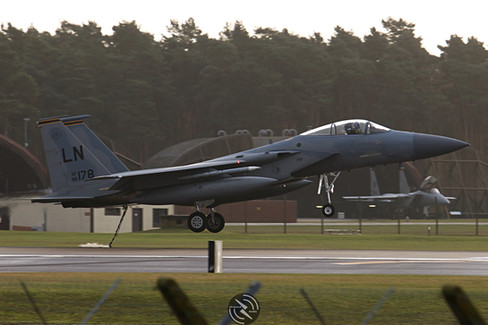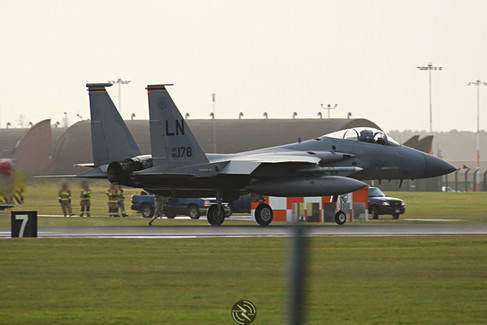How to catch an Eagle in Suffolk!
- Mike Lintott-Danks
- Sep 13, 2020
- 2 min read
How do you stop a Boeing F-15C/E Eagle/Strike Eagle when it has an In-Flight Emergency (IFE), normally hydraulic or brake system failure, and needs to land back at the airfield? The United States Air Force Europe at RAF Lakenheath use arresting cables, which spans the runway, and arrestor hooks on the aircraft. The Barrier Arresting Kits used at RAF Lakenheath are located at either end of the runway, in pairs to allow for a missed cable when the aircraft touches down, and to ensure the aircraft doesn’t vacate the end of the runway during an emergency. This system can be used for arresting aircraft that abort take off due to issues during departure.
The cables are typically between 2.5cm – 3.2cm in diameter and are suspended above the runway at a height of approximately 7.5cm. The cable is suspended by 15cm rubber ‘donuts’ which are spaced along the length of the cable. The cable is only for the aircraft hook to catch. The rest of the length of the system is made of 1,200 feet of thick nylon webbing tape which is pulled out from the large reels housed in the orange and white shacks either side of the runway. Once engaged the hydraulic pump starts to apply pressure to the braking mechanism on the reels to slow the aircraft down to a stop.
When an aircraft declares an emergency and the crew decide that they will need the arrestor system, the Fire Department (FD) vehicles are dispatched to either end of the runway and close to the orange and white shacks. If there is a hydraulic issue the aircraft may complete a low flypast along the runway to be checked from the ground to ensure that the landing gear is down and in the correct position.

The hook deploys from the rear of the aircraft between the engines and drags along the surface of the runway until it contacts the steel cable where it gets pulled up closer to the aircraft and the aircraft slowly comes to rest on the runway. Sparks are from the hook, the runway surface and the cable rubbing together.
Once the aircraft is stationary and the FD vehicles have checked the aircraft for any hazards the aircraft's engines are shut down. From this point on the FD Firefighters are in charge of the operation and they are supported by the 48th Civil Engineering Squadron (CES), who ensure that once the cable is released from the tail hook, that it is in correct order and returned to its original position spanning the runway for when the next emergency may occur. The aircraft can then be towed from the runway after further checks have been completed to ensure it is safe to do so. The final part of this operation is to check the runway for any Foreign Object Debris (FOD) that may have occurred during the arresting procedure. Before each days flying the cables are checked to ensure that are fit for purpose as an IFE could occur at any point during flying activities.
The series of photos throughout this article show the arresting hook and cable engagement from multiple IFE’s over a four-year period and some of the Fire Department vehicles used during these emergencies.






































Comments